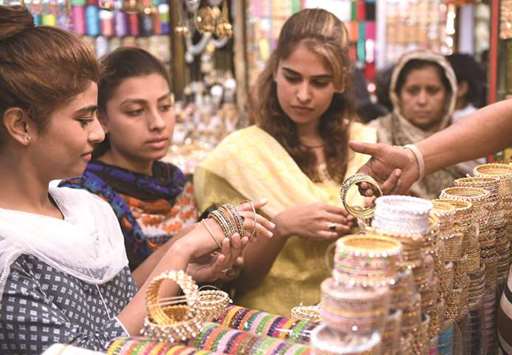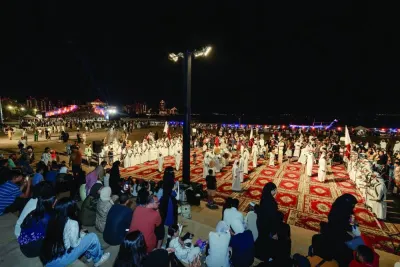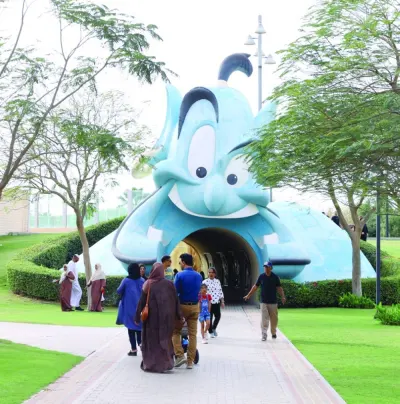Across the country, despite successive heatwaves, people thronged markets to boost the Eid economy by about 15%, crossing the trillion-rupee mark, hitting Rs1.1tn.
The spike is attributed to a combination of economic, social and political factors.
“Even where salaries are static, family income has consistently been increasing. ‘One job, one earner’ households are replaced by ‘multiple jobs, several earners’ households. Those better informed (thanks to the Internet and television) budget more skilfully to create the financial space needed to indulge on special occasions,” an analyst commented. “Expectations of a smooth transition of power and improved security situation has provided comfort, dulled collective anxiety, and mobilised Pakistanis to take a calculated risk for pleasure.”
“The law and order situation has improved significantly. For people starved of outdoor family activity, the holy festivals provide an excellent chance that no one wants to miss,” said Afnan Shah Khan, the director for operations at Lahore’s Emporium Mall.
He sees a 20% pick-up in the market this year compared with last year.
Khan mentioned a record footfall of more than 1mn people at his mall in this year’s Ramadan, up from 830,000 in 2017.
The second factor is the public’s buying power.
“People don’t go shopping with empty pockets. They clearly have a budget for Eid, irrespective of their social class,” another market watcher said. “It is illogical to compare budgets across the social spectrum as a small accessory for one person may cost more than the entire Eid budget of a low-income family.”
There is little empirical evidence to suggest a sudden jump in family income over a year.
Still, leaders of market associations in several cities assert that the majority of people in markets before the Eid were out to make purchases, unlike previously when window shoppers used to outnumber actual buyers in Pakistan.
“People are not just purchasing clothes, accessories and foods and beverages; they are also actively buying cellphones, home appliances, furniture and crockery,” a trader in Saddar, Karachi’s biggest shopping area, said three days before the Eid.
Buyer enthusiasm was not limited to in-shop purchasing.
Online shopping also made records, according to bankers and fintech experts.
Not everyone concurred with the perception of an expanding Eid economy.
Some people thought that expert opinion was based on simple observations.
“People see a rush on the roads and in shopping areas, and they assume that Pakistan is prosperous. For every shopper in the market, there are dozens who can barely make ends meet and have no money to indulge,” an artist insisted.
“It is the insufficient physical infrastructure in densely-populated Pakistan that chokes roads and causes traffic jams in shopping areas, if even a tiny fraction of the population ventures out of homes at the same time,” he pointed out.
“Like despair, the feeling of joy, cuts across all social divides. Groups of people of all ages and classes enjoy a good time in bustling Eid bazaars. It is a pleasure just to watch that,” commented a banker discussing the probable quantum of spending before Eid.
“Many shoppers use plastic cards and the majority of big business houses and brands record all their transactions,” he added. “It is, therefore, comparably easy to gauge money movement and assess the total quantum of transaction in a specified period today than at any point in the past.”
A freelance economist did not find the Eid economy projections absurd.
“(We are) a nation that can afford to spend Rs175bn in the holy month for philanthropic giving, (with) 2.4mn citizens approaching the central bank to acquire new currency notes,” she said. “The SBP (State Bank of Pakistan) has confirmed disbursing Rs350bn worth of new notes generally used as a cash gift at the holy festival. (And with) people getting bonuses and advance salaries, all this can very well spin Rs1.1tn collectively for the celebration.”
The projection of Rs1.1tn as a volume of the Eid economy is an intelligent guess based on the data provided by the SBP and the Federal Bureau of Statistics.
These include cash withdrawals by private account holders from banks, fresh notes issued on peoples’ demand, the official and unofficial flow of remittances from overseas Pakistanis, and scores on the consumers’ confidence index.
Commercial bankers confirmed massive withdrawals by account holders before the Eid.
Remittances this year are said to be better than last year.
The 10-month data of Financial Year 2017-18 posted last week by the SBP recorded inflows of $18.4bn, which comes to a monthly average of $1.8bn.
Traditionally during Ramadan, inflows almost double the average.
Assuming even one-third of that amount ($1.1bn) is spent in rupee terms, the total value will come up to Rs134bn at the rate of Rs122 to the dollar.
If remittances arriving through informal channels are inserted into the equation, a total of Rs250bn may not be too off the mark to project what overseas Pakistanis pitch in into the Eid economy of Pakistan.
“If we assume that remittances are 20% of the total spending, Rs1.1tn is perfectly believable,” a trend gazer commented, adding that he actually found the estimate somewhat conservative.



